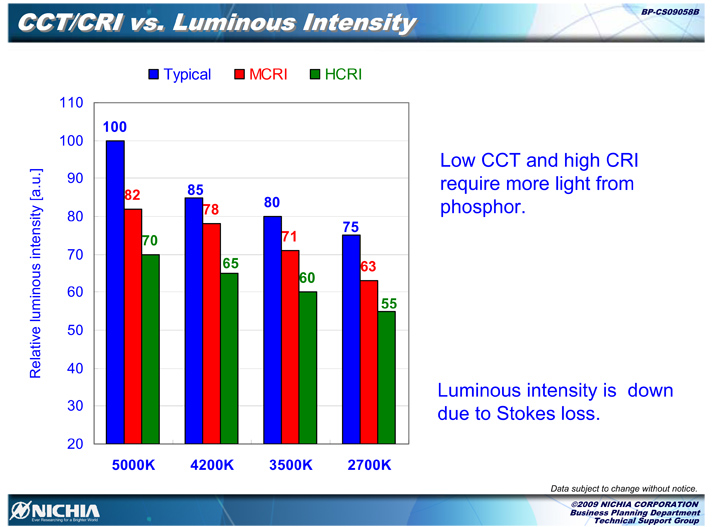I'd say these new LEDs while not being lumen sluts are quite a breakthrough. The news here is making such high CRI while still having a relatively high temperature and reasonable efficiency.
"The SCW1653 version comes in 5,000, 4,200, 3,500, 3,000, and 2,600K versions. With a colour rendition level of 95 (CRI), it stands out from the crowd making it an excellent choice for a variety of applications. Brightness levels are typically 60-70 lm; depending on the colour temperature."
"The SCW1653 version comes in 5,000, 4,200, 3,500, 3,000, and 2,600K versions. With a colour rendition level of 95 (CRI), it stands out from the crowd making it an excellent choice for a variety of applications. Brightness levels are typically 60-70 lm; depending on the colour temperature."






